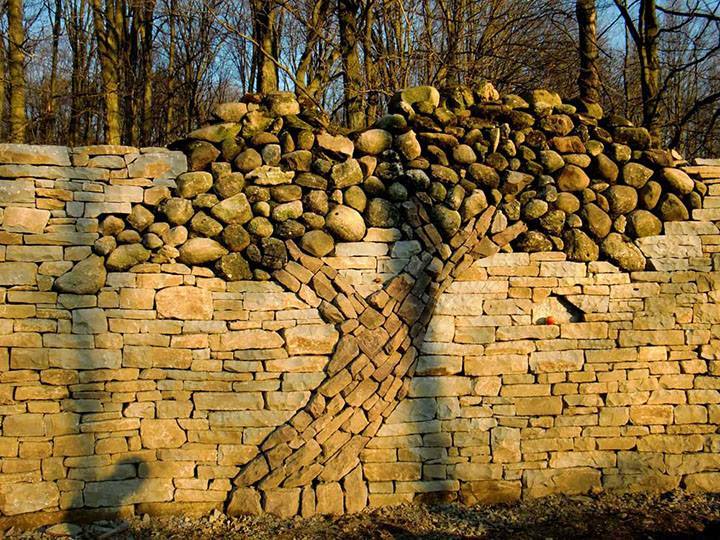#3091. Tree Façade: Organic Composition in Dry Stone Masonry
Before us stands a remarkable example of dry stone masonry, where engineering craftsmanship meets artistic vision. The wall demonstrates a magnificent contrast between the ordered flat stonework of the main section and the dynamic central composition resembling the silhouette of a tree.
The façade design is built on the principle of visual tension: the lower part of the wall consists of carefully arranged flat stones in sandy hues, forming clear horizontal lines. The central part of the composition represents a stylized tree, where the trunk is formed from the same flat stones but placed at angles, creating the effect of spreading branches. The "tree's" crown is executed using rougher, rounded boulders that contrast in form and texture with the rest of the masonry.
The technical execution demonstrates the highest level of masonry skill—the absence of binding mortar requires perfect fitting of each element. Particularly impressive is the transition from even rows to the dynamic central portion, where curved lines of stonework create a sense of growth and movement.
Against the backdrop of the winter forest, this wall appears as a dialogue between man-made order and natural organics, emphasized by the formal contrast between the geometric rigor of the base and the biomorphic silhouette of the central motif.
